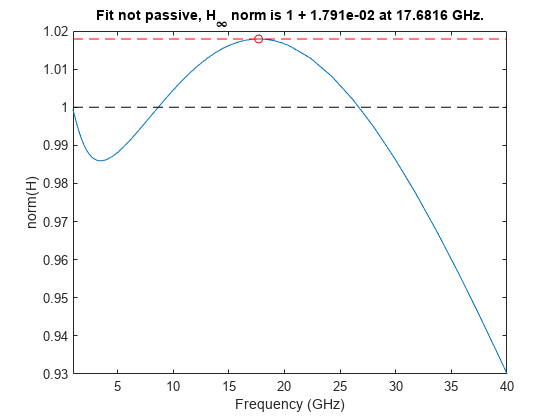passivity
Plot passivity of N-by-N rational fit output
Description
passivity( plots the passivity of
the input, fit)fit, over a range of frequencies. Passivity is
measured by computing the H-infinity norm of the fit. H-infinity norm is the maximum
two-norm of the transfer function H over all the frequencies (0,
Inf).
Examples
Input Arguments
Output Arguments
Version History
Introduced in R2019a
